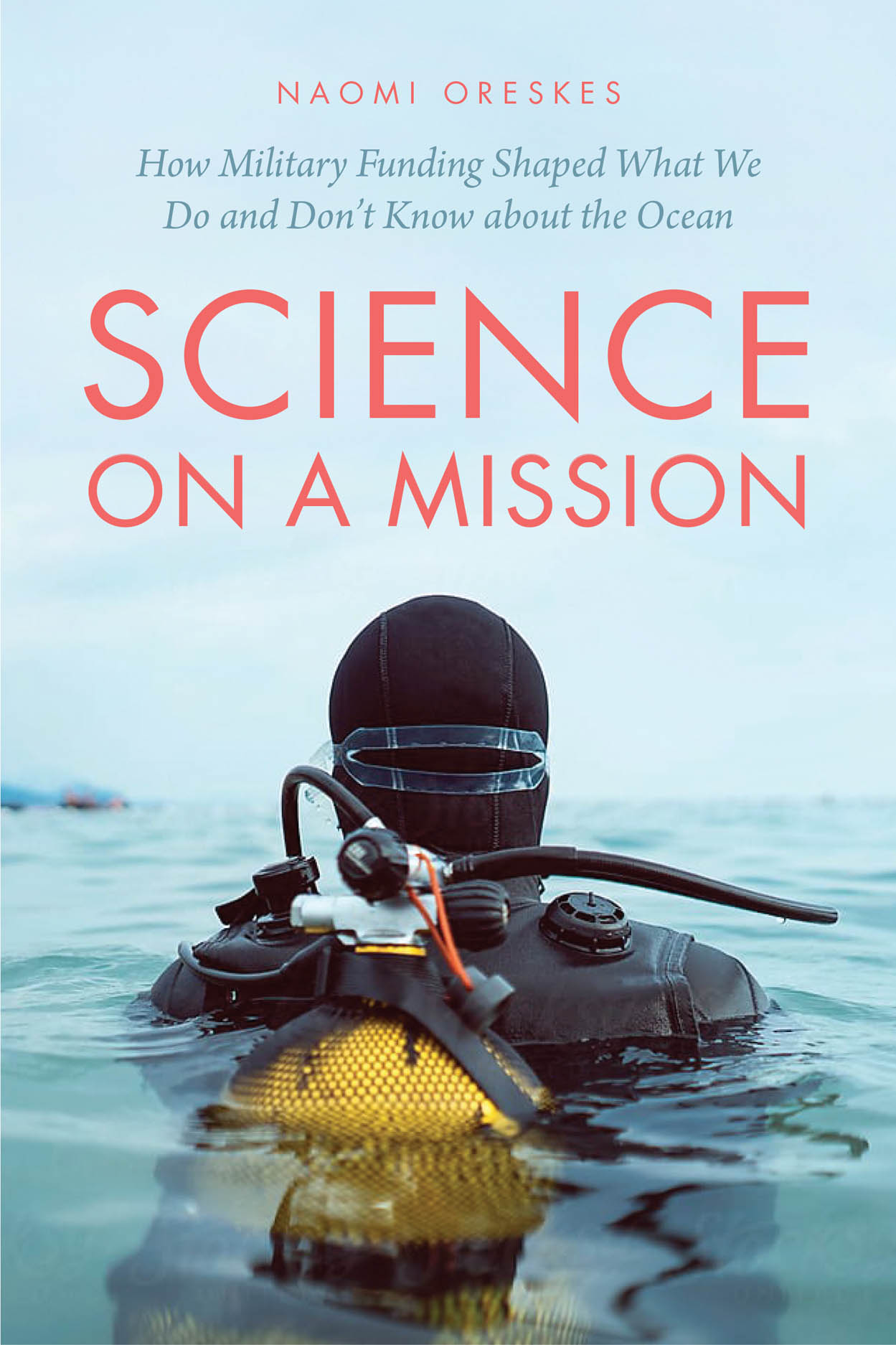Science on a Mission: How Military Funding Shaped What We Do and Don’t Know about the Ocean
Reviewed by Aria Ritz Finkelstein, Massachusetts Institute of Technology
A study of the complex interactions between military interests, geopolitics, government funding, and environmental research
Science on a Mission: How Military Funding Shaped What We Do and Don’t Know about the Ocean, by Naomi Oreskes, University of Chicago Press, 2021, 744 pp.
This book is about the complex interactions between military interests, geopolitics, government funding, and environmental research. It is not about environmental policy, strictly speaking, so why is it relevant to this forum? These interactions have played a crucial part in dictating what we know and what we don’t know about global environmental change, and, in turn, how we are equipped to govern.
Naomi Oreskes tells the story of the Office of Naval Research (ONR) and its work during the Cold War, when it became clear that naval operations required a thorough understanding of the environments within which they would take place. This story is not a new one, but Oreskes explains that this “golden age” of marine science was not as intellectually free as has been supposed. Military needs—naval exploration and new research tools (including the geographical positioning systems without which much of today’s environmental research would be impossible)—directed research, sometimes, to counterintuitive effect.
In each chapter, Oreskes examines a story or project that illustrates a piece of the relationship between military funding and ocean research. Sometimes, naval support led research toward breakthroughs that would otherwise have been overlooked. Sometimes, personal dynamics shaped institutional priorities. Sometimes, the need for secrecy affected the position of military research within the larger scientific community and its collective discoveries.
As Oreskes points out, these effects should be obvious: Had the ONR been backing pure oceanographic research it “would have meant that they were not actually doing their job.” But she uncovers unexpected complexity in the ways that military needs directed this research. Because the Navy was a client in need of accurate data rather than ideological confirmation, its requirements shaped research agendas but not findings or interpretations. As a way of framing this, Oreskes offers that, rather than thinking of it as impure, we can think of alloyed science, “suited to the purposes of the period.”
This history is important in and of itself, but what we can extrapolate from it is, too. On the one hand, because of the emphasis on the ocean as a theater of war, scientists failed to devote the attention to biology and ecology that would have alerted us to climate change’s impacts and to declines in fisheries. On the other, they were able to study physical oceanography thoroughly. Today, not surprisingly, the most prolific marine ecologists are also the loudest proponents of marine conservation. Much of their research is backed by environmental advocacy groups and driven by their enthusiasm for fighting the deterioration of marine ecosystems. “Listen to science” is a refrain in policy so common that it is banal, but Oreskes makes clear how much this science and its priorities are not to be taken for granted.
That we need to fund marine climate research goes without saying. What is less obvious is the insight that this funding can alternately spur and hinder good research. If we believe that sound policy rests on sound research, then alloying research and policy well is critical. Maybe the most provocative question Oreskes leaves us with is: instead of waiting to look back at the effects of our institutional research structures, how can we see them clearly now?





